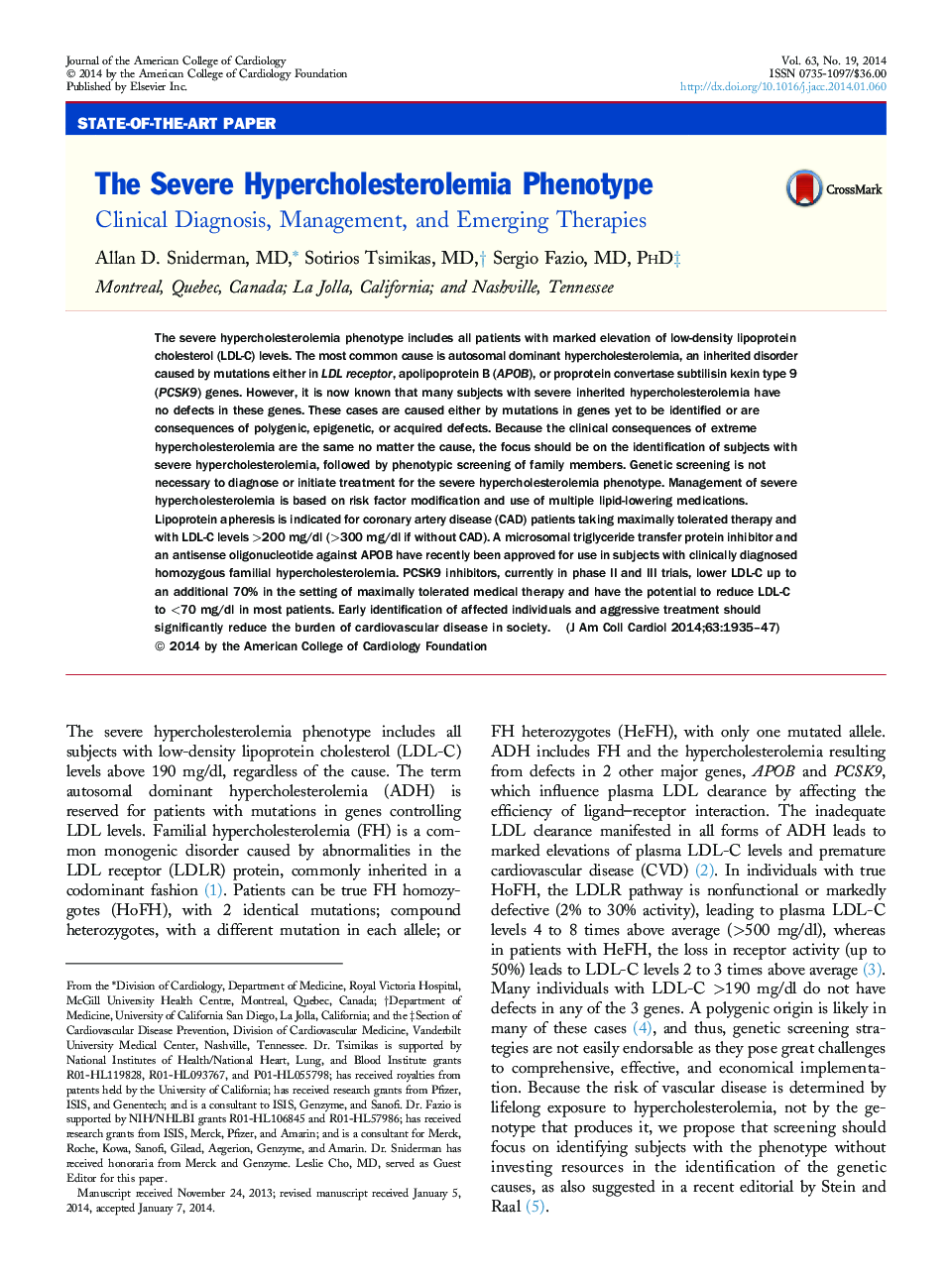| کد مقاله | کد نشریه | سال انتشار | مقاله انگلیسی | نسخه تمام متن |
|---|---|---|---|---|
| 2945452 | 1577103 | 2014 | 13 صفحه PDF | دانلود رایگان |
The severe hypercholesterolemia phenotype includes all patients with marked elevation of low-density lipoprotein cholesterol (LDL-C) levels. The most common cause is autosomal dominant hypercholesterolemia, an inherited disorder caused by mutations either in LDL receptor, apolipoprotein B (APOB), or proprotein convertase subtilisin kexin type 9 (PCSK9) genes. However, it is now known that many subjects with severe inherited hypercholesterolemia have no defects in these genes. These cases are caused either by mutations in genes yet to be identified or are consequences of polygenic, epigenetic, or acquired defects. Because the clinical consequences of extreme hypercholesterolemia are the same no matter the cause, the focus should be on the identification of subjects with severe hypercholesterolemia, followed by phenotypic screening of family members. Genetic screening is not necessary to diagnose or initiate treatment for the severe hypercholesterolemia phenotype. Management of severe hypercholesterolemia is based on risk factor modification and use of multiple lipid-lowering medications. Lipoprotein apheresis is indicated for coronary artery disease (CAD) patients taking maximally tolerated therapy and with LDL-C levels >200 mg/dl (>300 mg/dl if without CAD). A microsomal triglyceride transfer protein inhibitor and an antisense oligonucleotide against APOB have recently been approved for use in subjects with clinically diagnosed homozygous familial hypercholesterolemia. PCSK9 inhibitors, currently in phase II and III trials, lower LDL-C up to an additional 70% in the setting of maximally tolerated medical therapy and have the potential to reduce LDL-C to <70 mg/dl in most patients. Early identification of affected individuals and aggressive treatment should significantly reduce the burden of cardiovascular disease in society.
Journal: Journal of the American College of Cardiology - Volume 63, Issue 19, 20 May 2014, Pages 1935–1947
